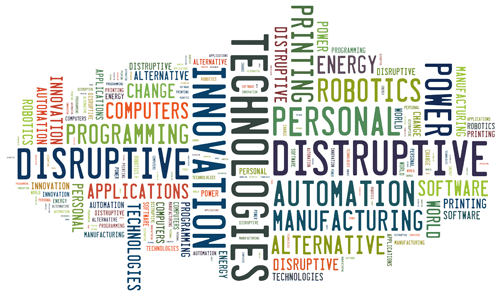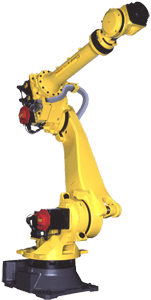Thinking big is common in innovation – "What can we do to change the world?" We want to start big, and we want to end up with big ideas. The irony is that sometimes it is stepping back from those big projects and looking for specific applications of our ideas for the everyday consumer or business that can be most useful. Personal focus on consumers and on specific customer needs is a key to disruptive technologies.

For example, that deep thinker at Apple believed that the understated personal computer was going to change the world, not just large main frame computers.
Another area where developers are currently trying to build large scale, highly efficient and high cost systems is alternative energy. Should this thinking be scaled down as well?
 Another example that is not so high-tech, is the McDonald’s/Starbucks battle. Who would have believed that McDonald’s largest competitor and driver for change would be a coffee company? McDonald’s and Starbucks don’t even sell the same experience, yet Starbucks, once a startup company, has caused McDonald’s to drive toward their business model. Why, Starbucks is all about personalization. If you aren’t a coffee drinker, the orders at Starbucks seem to be a foreign language. They made popular a disruptive technology to the coffee industry – the coffee barista! There is a feeling of personal power in customizing "my coffee" that drives and attracts people. Starbucks has changed the way coffee is consumed – one cup at a time.
Another example that is not so high-tech, is the McDonald’s/Starbucks battle. Who would have believed that McDonald’s largest competitor and driver for change would be a coffee company? McDonald’s and Starbucks don’t even sell the same experience, yet Starbucks, once a startup company, has caused McDonald’s to drive toward their business model. Why, Starbucks is all about personalization. If you aren’t a coffee drinker, the orders at Starbucks seem to be a foreign language. They made popular a disruptive technology to the coffee industry – the coffee barista! There is a feeling of personal power in customizing "my coffee" that drives and attracts people. Starbucks has changed the way coffee is consumed – one cup at a time.
For manufacturing and automation, what might be a disruptive technology that can be introduced on a small, personalized scale? One prediction is 3-D printing. This makes a lot of sense. Up until recently, 3-D printers were very expensive and used almost solely in the realm of Fortune 100 sized companies. Small scale 3D printers have begun to show up and are gaining traction, and hold promise of moving manufacturing (to some extent) directly into the basement, garage, or study of the average consumer.New software and printing media (metals, plastics) designed for 3-D printing are making this technology more cost effective and more productive.
How could manufacturers embrace and apply this disruptive technology to avoid being devoured by someone else employing it in more personalized ways? Some ideas include;
1. Develop online portals where users can purchase 3-D designs to print.
2. Offer 3-D design options that the consumer, looking for a personalized product, can only get through a print portal.
3. Allow for personalization of each design.
4. Develop an algorithm that responds to user input to develop the final 3-D design information.
5. Sell specialty materials to use in the printers

How might these concepts be applied to the growing use of robotics in manufacturing and warehousing? The key here, again, is to simplify. Do not think of the "Swiss army knife" robot with crazy end of arm tools and complex software designed to do 100 jobs, but instead think of the robot that can perform tasks that are specialized.
Here is an out of the box example. Think about a personalized fashion assistant – a robot programmed to apply make-up using a variety of fashion trends or celebrity looks. The robot’s programming can be updated and new looks purchased. Sound crazy? How could you apply this idea to your manufacturing process? We can guarantee you that even if you don’t, at this very moment someone else is.
Do you have an idea for a robot that could make your life better, safer, easier, more productive, or more fulfilling? Share your idea with us and we might post it here!
